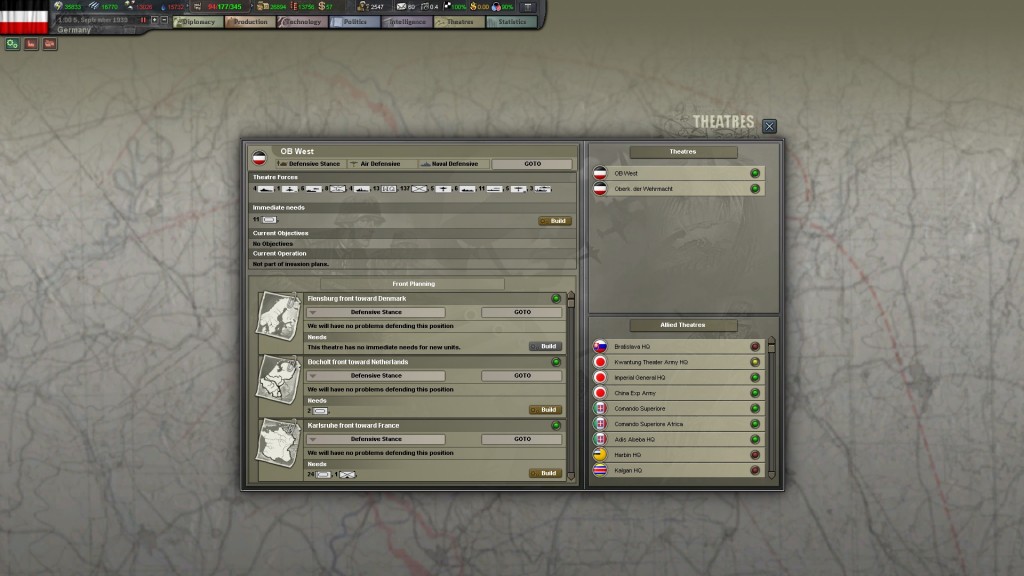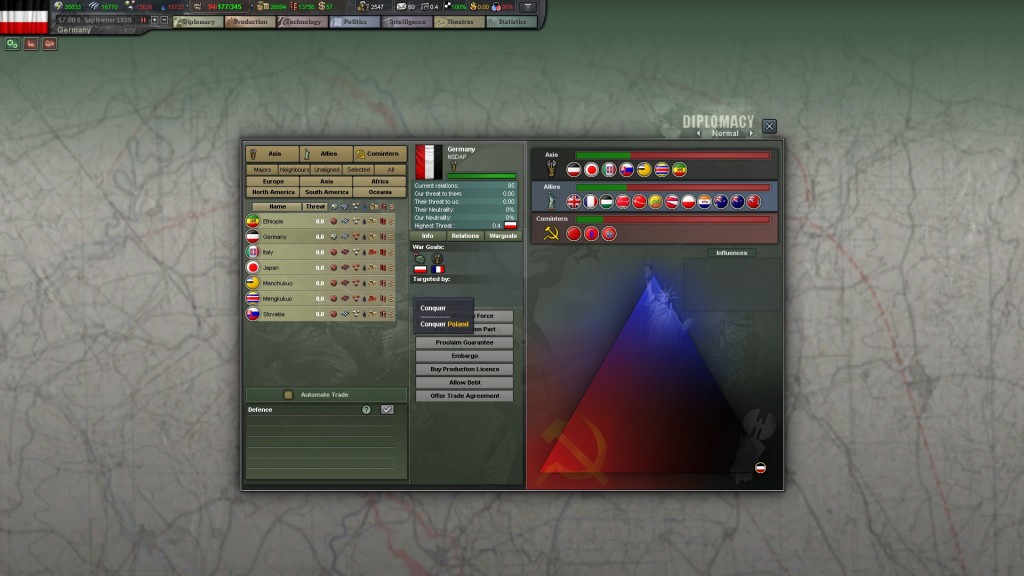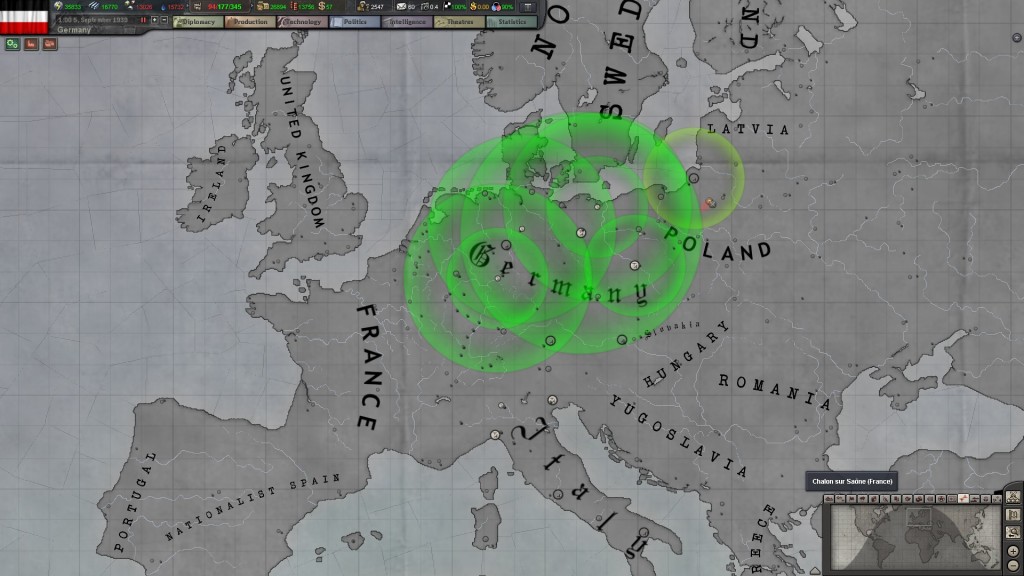
Another development is the Air Mapmode. This allows players to view each airbase across their nation, and the range of the planes stationed there. This shows how far a plane can go before coming back to refuel. It is great for planning bombing runs or sending in fighter planes to battle it out, as you can quickly see where each plane needs to be based. Having bombers based just behind the front line allows them to easily travel into enemy territory.
The new partisan system adds a new level of warfare. This allows you to be a bit sneaky and turn the enemies people against them. By slipping in some of your men, you can begin to create turmoil without actually marching in your armies. This is great to regain lost territory, via supporting rebels, and even to just distract the enemy. You can destroy or support various ideas, in your country or another, in order to twist the people into the place you want them. Coups have also been added, further increasing the ways by which the player can take the war to the enemy.
When entering a war, each member of the alliance or faction (Allies, Axis, Comintern) can now set their own War Goals. This allows players to define their reasons and goals for the war, and also helps in keeping the war under control. One can state that he is entering the War for a specific reason, for example, to recapture territories X, Y and Z from the enemy. Once he or she has these territories, they can respectfully withdraw from the war without having to fight a battle that is not in their interest.
Also present are a lot of little changes and improvements that add to the overall flow of the game. Previously, when playing, in-game time moved by at a speed of 1 real second to the hour in game. While this speed was often fine when managing forces during a war, it was painfully slow in peacetime, when your country is doing fine. The expansion introduces many more speed settings that can get up to the very fast, which fixes this problem.
One of the major points added, for previous Hearts of Iron 3 players, is that of multi-core support. This means that the game now uses more than one CPU core, if more than one is available. This has a drastic effect of gameplay and everything now runs fluidly for those with multi-core machines. This is a feature that should have been in the original, but it is welcome now nonetheless.
A zoomed out view of the Air map mode, highlighting airbases and the range of the planes stationed there.
Also added by the expansion are smaller battle scenarios, such as Operation Desert Fox, the Southern Conquests, Fall Blau, and a couple of others. These are limited, historical scenarios that can test a player’s abilities or even act as a sort of tutorial to get a new player going. They have have a limited map, so gameplay can only take place in the area that it historically did. These are fun little chunks of gameplay, and a nice side track from the grand campaign.
For the Motherland is a great addition to the already good Hearts of Iron 3 repertoire. It brings in a lot of new features and is a solid package. All of the new features added, be they war goals, map modes, theatre management or the partisan system build on the original and really make the game seem full and finished. While there are still some issues from the original that are present - it is not perfect - it does not bring many new problems to light. Still sporting a steep learning curve and heavy, historic, grand strategic, For the Motherland will be enjoyed by all those who liked the original. If you are interested in the time period, or like good grand strategy, this game may be for you.
Be sure to check out our review of the original Hearts of Iron 3 and the expansion Semper Fi here.



Recommended Comments
There are no comments to display.
Please sign in to comment
You will be able to leave a comment after signing in
Sign In Now